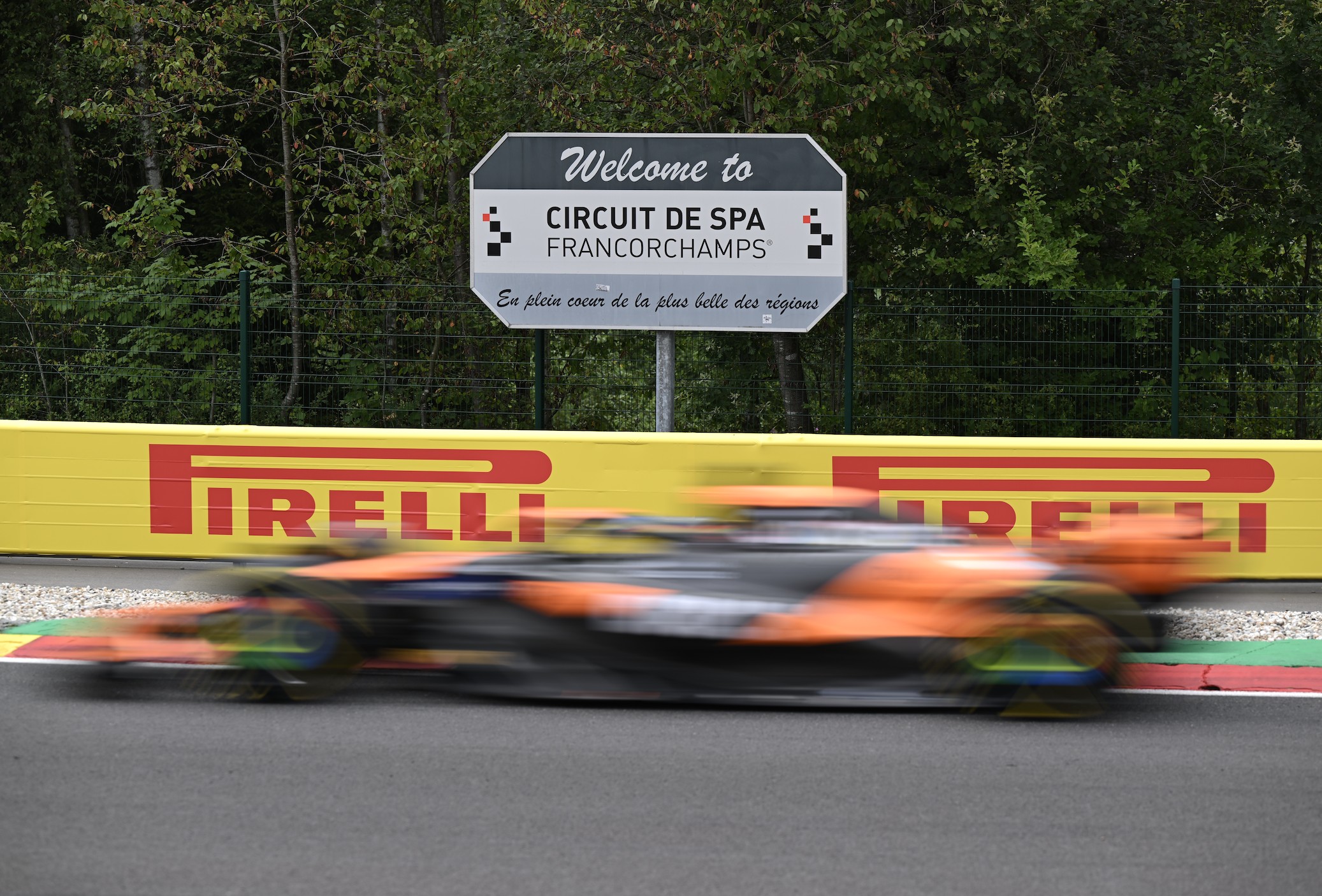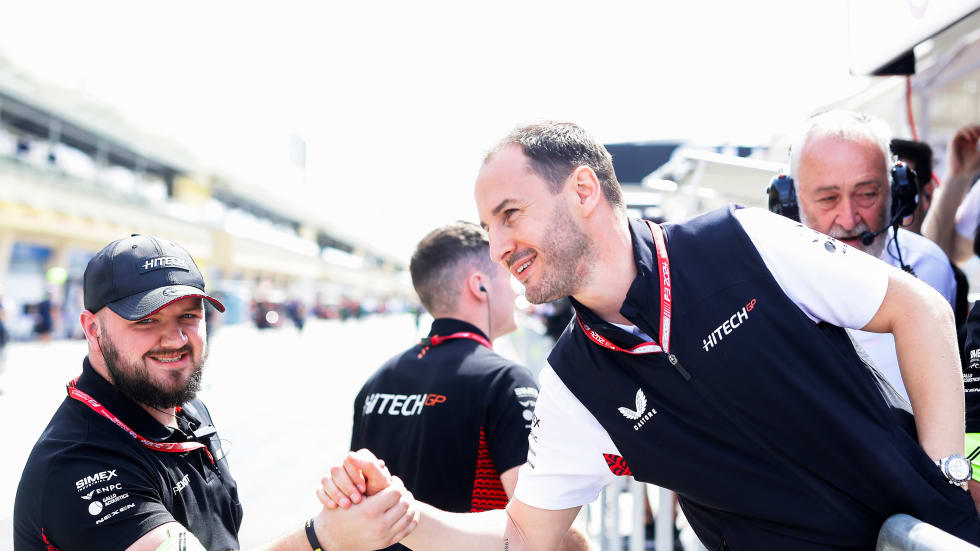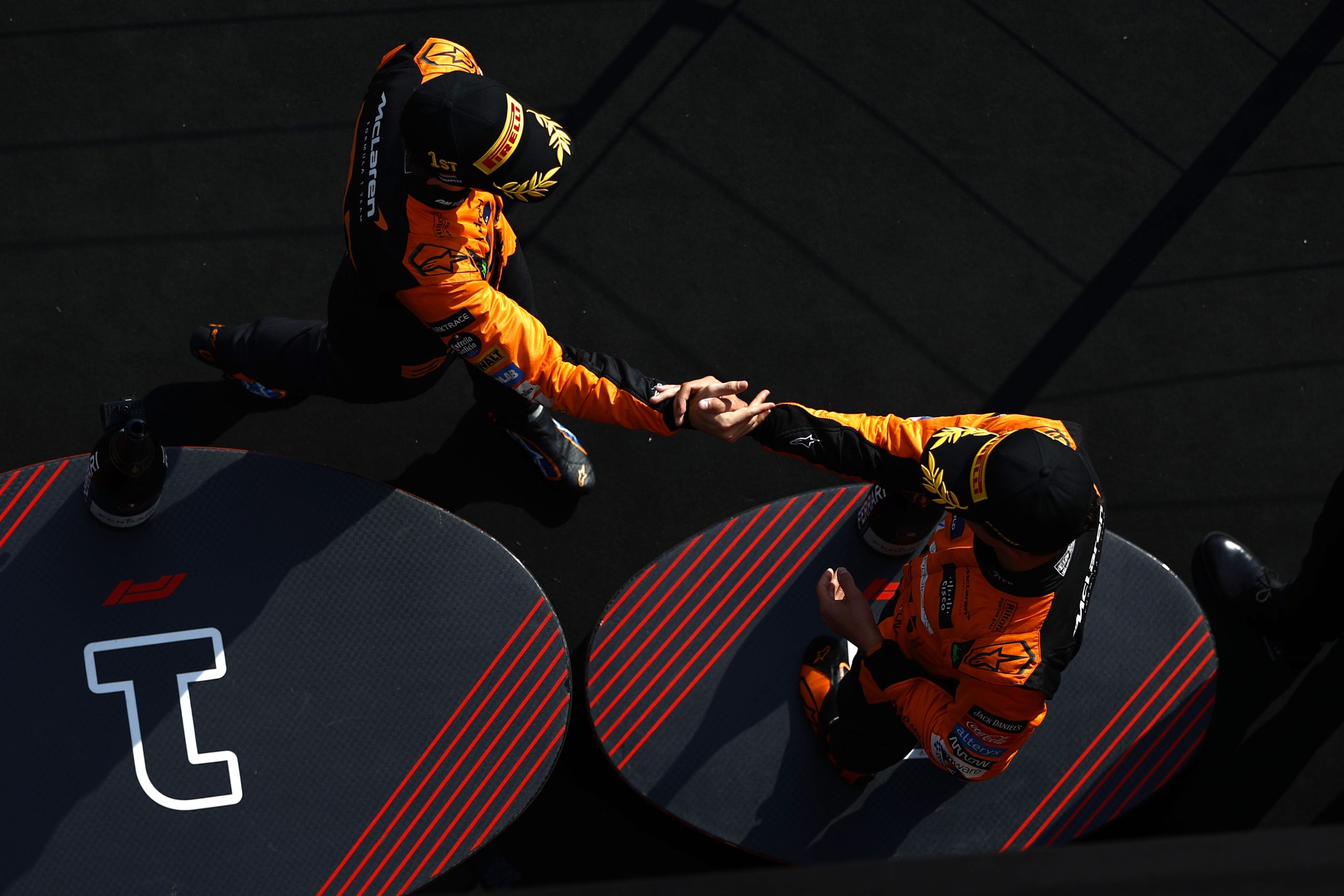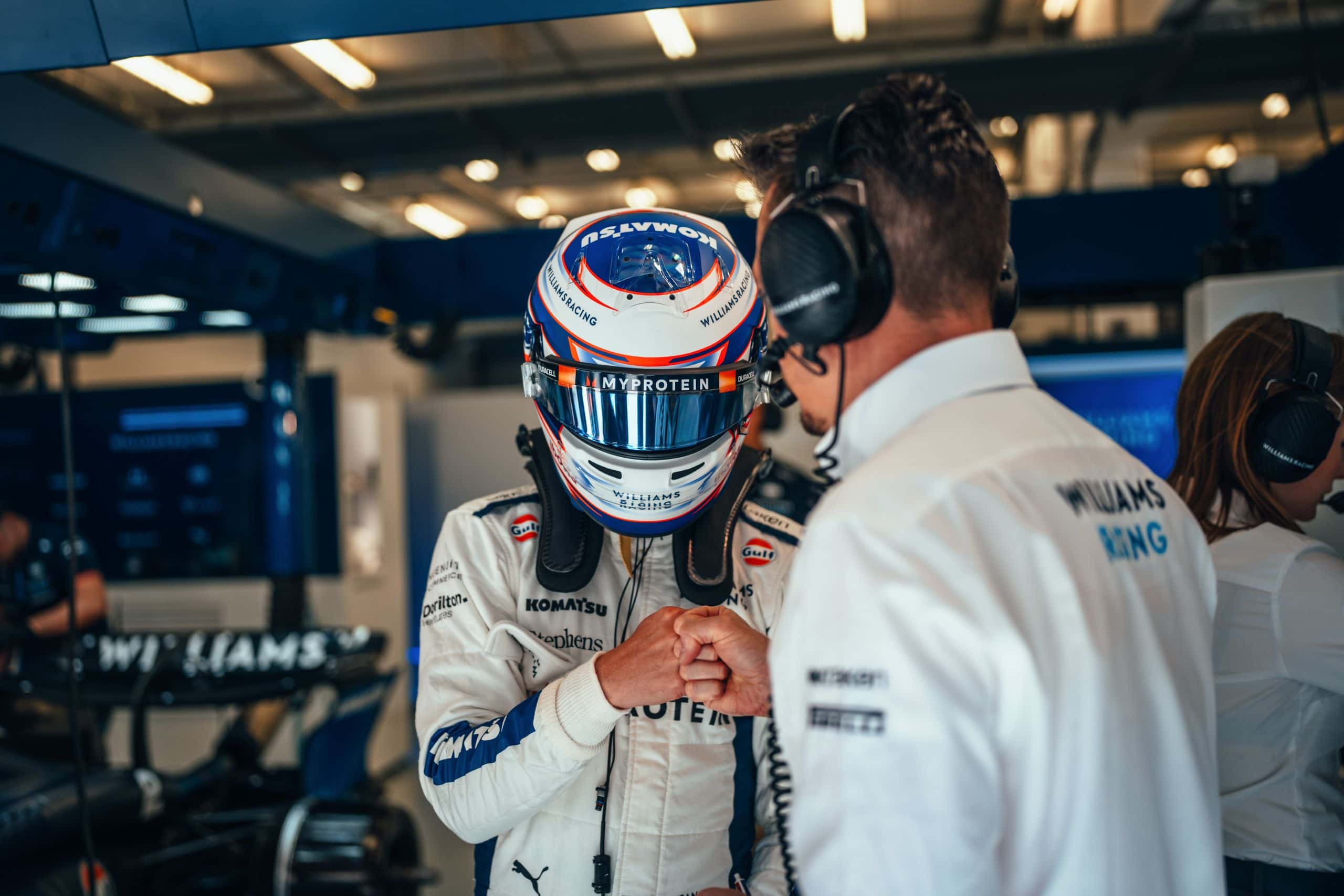How Do Formula 1 Front Wings Work?
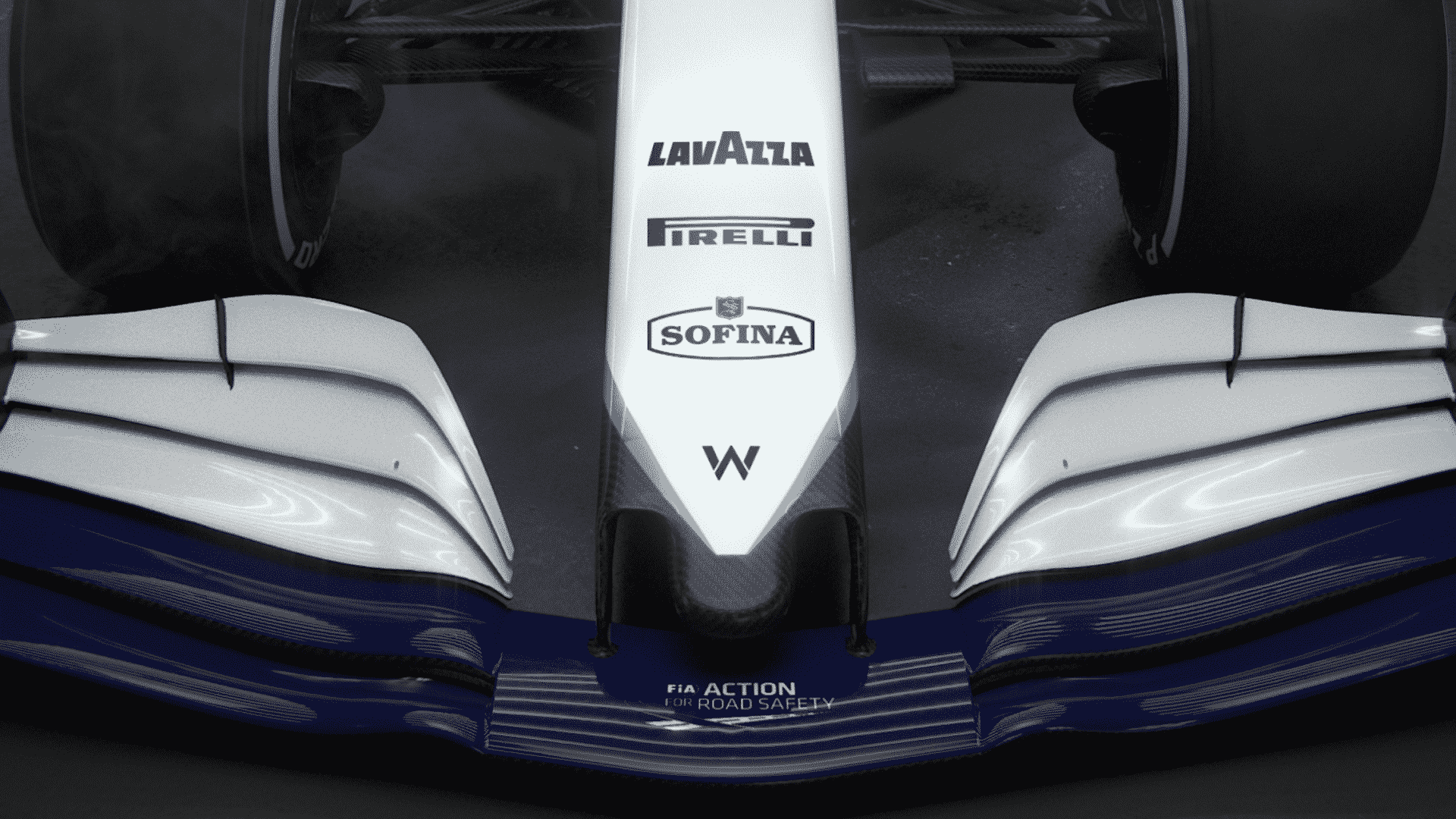
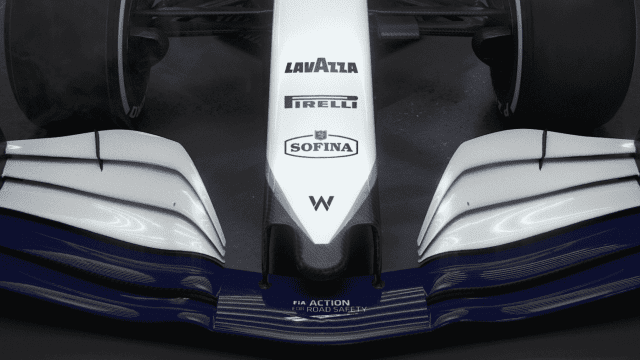
The front wing of a Formula One car is referred to as “bodywork around the front wheels” or the “front bodywork” in the FIA rules. However, for how the FORMULA 1 front wing works or helps the performance of the car, the term “front wing” will do just fine for now.
On a straight in any Grand Prix a Formula One car attains enough speed to take off. The car would go into the air if it was not kept firmly on the ground by the downforce generated by the aerodynamics of the car. The front and the rear wings of the car play an important role in generating this downforce; the front wing of the car more so. If aerodynamics contributes to a major part of the performance of the car, the front wing plays a major role in the overall aerodynamics of the car.
Being the first aerodynamic part of a car cutting through the air, it is responsible for much more than just generating downforce. It is also responsible for regulating the airflow around and behind the huge front tyres of the car. The big front tyres can be big game spoilers in the aerodynamics of a Formula One car.
The front wing also plays a big part in preparing the air flows that will intercept the various portions of the car down the line. Designers and technicians use fluid dynamic simulators to study and improve the efficiency of Formula One car wings. It has to direct the right proportion of the air to the right parts and components of the car.
Even slight damage to a seemingly unimportant part of the front wing can put the car at a disadvantage by several seconds in a lap. Bigger damage can put the car and the driver at risk of a crash. It is for this reason that the front wing is one of the faster replaceable parts in a Formula One car after the tyres. Understandably, engineers and mechanics pay great attention to the front wing of a car after a mishap.
Why do Formula One cars have wings?
Wings on an automobile are there to streamline the flow of the air around the car and to improve its aerodynamics. Good aerodynamics is extremely important in Formula One cars which can attain speeds of more than 300 km/h on a straight. This makes it important for Formula One cars to have wings, both in the front as well as the rear of the car.
The wings help to produce downforce which helps the car remain in a firm grip with the track. Cars not equipped with wings are likely to take off as an aircraft does at speeds of 300 km/h. The wings also help to streamline the flow of air around the bodywork of the car. This helps to reduce the drag on the car and improves its performance.
The generation of downforce comes at the cost of drag that it produces. This is more than compensated by the front wings directing the flow of air towards the side pods which help to cool the engine. An overheated engine will result in the car stalling. The wings also help to direct the air so that it offers the least resistance to the rest of the parts of the car in their wake.
How is a Formula 1 front wing constructed?
The wing the component of a Formula 1 car which is the most regulated by the FIA. Its width, breadth, height and other dimensions are all regulated. There is even a limit on how much cars wings can flex. It is for this reason that most of the front wings of Formula One cars look very similar. The only way to increase the efficiency of a front wing is to continually improve the aerodynamic design of the wing to enable maximum down force and the right airflow around the car.
The front wing consists of a series of smaller wings arranged one behind the other. The FIA allows a maximum of five mini wings per side of a front wing. These wings are carefully designed and aligned to optimise the downforce on a Formula One car. The engineers and designers have to also regulate the airflow in the wake of the front wing.
These small wings are each an aerofoil in their own right. Each one of them generates downforce and directs the airflow in their wake. It is the engineers and the designer’s job to optimise the downforce and direct the residual airflow in the right direction. Each of them also resembles the wings of an aeroplane but are shaped and designed to keep a car on the ground rather than to take off. Each wing has one end plate on each side.
As mentioned before, the dimensions of the front wing and its flexibility are regulated strictly by the FIA. This makes the front wing, one of the most crucial parts of the aerodynamics of a car, a much researched and modified part of the car. Formula One teams strive hard to draw as much benefit as they can out of the wing even if it means spending more money.
The front wings of a Formula one car are, as is the rest of the bodywork, built from carbon fibre. Various other metals and minerals in appropriate proportion may be added to regulate the flexibility of the wing. The FIA allows minimal flexibility in Formula One car wings. That results in building multiple wings to arrive at the most suitable one.
The front wings also have more than 100 settings. The settings are changed for different tracks and different conditions. This makes the driver derive the maximum out of the wings. Constructing the wings out of carbon fibre makes them more sturdy. However, the slightest damage to the wing will result in the wing being replaced. That is why the front wing is the second-fastest replaced part in a Formula One car after the tyres.
How does a Formula 1 front wing create downforce?
In a Formula One car, only a small portion of the front wing is used to create downforce. The rest of the wing regulates the airstreams around the portions of the car in their wake. The endplates and the inner arched portion of the front wing flaps contribute to the generation of downforce.
The lateral pressure created by the gradients in the front wing creates vortices that contribute towards the downforce in the car. After all, the front wing contributes up to 40 per cent of the downforce generated in a car. The front wing, being close to the track, also contributes to creating the maximum ground effect and increasing the generated downforce.
Before 2009, the cars had continuous aerofoil sections from one end of the wing to another. Before then, cars had only two or three aerofoil sections. These sections created enough downforce for the cars to get a firm grip on the track. But in 2009, the FIA came out with a regulation that required a clear section of 250mm on either side of the centre of the nose. This forced the aerodynamicists to increase the number of aerofoils on the wing.
How do front wings improve the aerodynamics of a Formula 1 car?
The downforce generated by the front wings comes at a price. This generation of downforce has a penalty of increasing the drag on the car. Any drag is detrimental to the performance of the car. The front wing has to be so designed that they compensate for the drag created by them. This is where the streamlining of airflow around the car comes in.
Until 1998, the endplates were just that; endplates. The vortex of air that creates the downforce also interferes with air rotating around the front wheels. This turbulent air affects the performance of the big wheels and hence that of the car. Endplates were therefore modified to direct the airflow between the wheels rather than at them.
If the front wing leaves a turbulent wake, different parts of the car will be affected by the turbulence creating a drag. This will affect the performance of the car. It is for this reason that the different mini flaps reduce in height closer to the nose. It is this asymmetry that enables the wing to regulate the airflow in its wake.
The shape of the mini wing enables it to direct the stream not used for creating downforce towards the side pods. It is this stream that cools the air-cooled engine of the car. Without the help of the slipstream the engine would heat up and the car would stall. The engine radiator uses this air to cool the engine and improve the performance of the car.
How much does the front wing of a Formula One car cost?
The front wing is the most important component that determines the aerodynamic streamlining of a Formula One car. This makes it one of the last components designed for a new car. The shape and the bodywork of the car will determine the construction of a wing. As a result, the front wing goes through a lot of aerodynamic trials before it is finalised.
The aerodynamic trials, simulated and on-track, are what make the front wings of a Formula One car costly. The cost of the materials used in constructing the front wing pale in comparison to the simulations and trials involved in a car wing. Both the constructor of the car and the driver will understandably want to get the maximum out of the wing.
The cost of a good front wing could easily go upwards of USD 300,000. Much depends on the budget of the team and its aspirations. Many teams go for lower costing front wings. But front wings are studied constantly and modified as required to obtain optimal aerodynamic performance.

